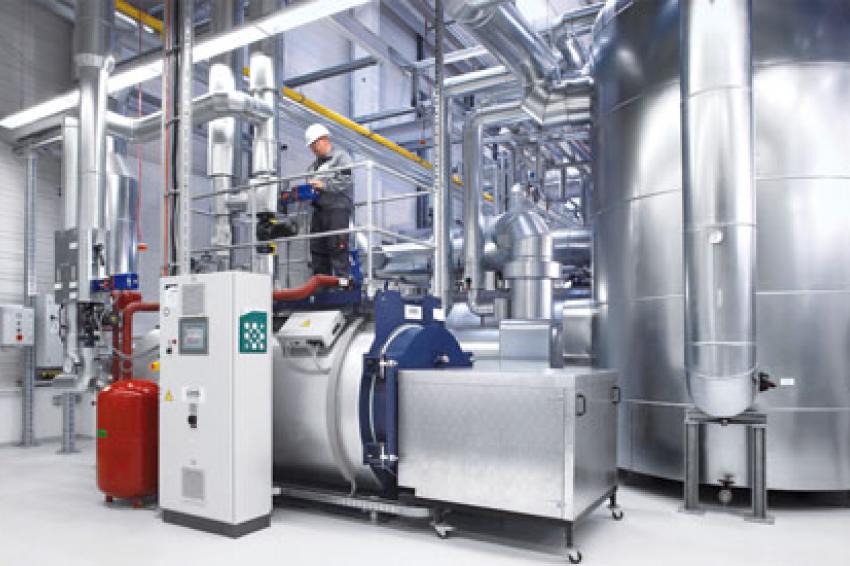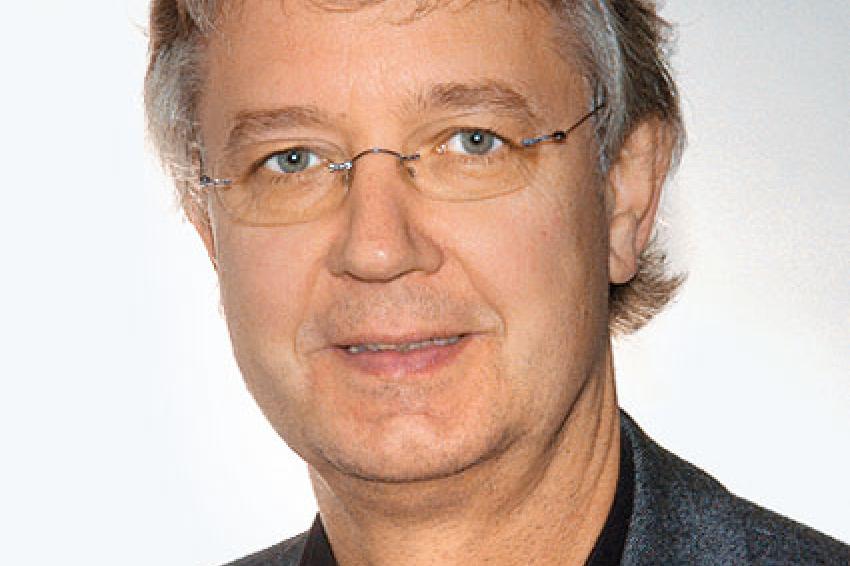Vaccine Production: ‘Best-in-Class’
Building Automation System for the Pharmaceutical Industry
The production of pharmaceutical products requires strict compliance with specified ambient conditions. Since the building automation systems (BAS) must meet very special requirements and increasingly stringent official regulations.
In pharmaceutical production plants, the building infrastructure must meet the highest standards from the initial spatial layout to the carrying out of the construction work and the management system. In biotechnology plants in particular, including those used for vaccine production, these requirements are especially high on account of the staff and material flows within the building. The objective is to ensure product purity at all times.
Heating, ventilation and air-conditioning technology (HVAC) ensure controlled conditions around the clock. No errors are permitted in the control, monitoring and the recording and archiving of all production-relevant ambient conditions according to official regulations - a challenge that the building automation system has to be able to meet. Particular focus is on the operation of cleanrooms. These rooms are subject to strict regulations of German and European supervisory authorities, but also to regulations imposed by the U.S. Food and Drug Administration (FDA).
For the operation of cleanrooms, it is not permitted to exceed the limits set for airborne particles and for microbial contamination of air or surfaces. Compliance with the ambient parameters must be certified. As part of this certification process, special guidelines for cleanrooms apply, such as Annex 1 of the EU GMP (Good Manufacturing Practice) guidelines, the "Aseptic Guide" of the FDA, ISO Standards 14644 and 1340-1, as well as the provisions of VDI 2083.
Operation of Biotechnology and Pharmaceutical Plants
A reputable international pharmaceutical company has built a new production plant for vaccines - consisting of warehouse buildings for outgoing products, production building, quality control building and central energy station - at a location in Germany in record time for a European showcase project. The aseptic production has to meet the highest requirements for the sterility of the preparations. Two active viral strains can be processed simultaneously on two production lines within a production operation thanks to a core process that is largely identical. This also ensures that highly complex handling requirements are met:
The ventilation and air-conditioning technology has to prevent effectively and with 100 % reliability an exchange of air between the respective cleanroom areas. During the feed in of media and seed viruses via the supply corridor, open- and closed-loop control parameters have to be adapted extensively to the situation in the event that individual HVAC fail.
In addition to reliably detecting and recording dangerous states, the extensive modification of the parameters is an automation control challenge that previously seemed insurmountable, especially taking into account the need for certification. In the certification process, special focus has been paid to the building automation system (BAS), especially with regarding to the handling of "new" pathogens or pathogens whose biological risk is classified as high for the production of vaccines (such as in the case of pandemics or the SARS virus). The BAS must meet the requirements for higher biological safety, by switching from overpressure to underpressure, for example. These challenges were tackled in this project.
The BAS used for the project, which was based on Simatic PCS 7, is designed to meet the criteria as center of excellence for the production of vaccines - not only with regard to the above mentioned requirements. The objective was also to include all of the new plant's buildings, from the production to the warehouse, test laboratories and the connected combined heat and power station, in an integrated system.
The client's requirements for the BAS, such as continuity, uniform engineering, advanced control functions and high-performance communication, could only be met with requisite automation and control systems of the highest industrial standard. The Siemens process control system was therefore the first choice of the experts and was able to convince from the start thanks to its excellent integration capability and open interfaces.
Engineering Partner
The project planners searched for a partner that was able to translate the innovative approach into specifications and to further refine this, and who had proven experience in the pharmaceutical sector and with Simatic PCS 7 area in order to be able to even meet the ambitious deadlines set for the project. The decision fell on Stadler + Schaaf Mess- und Regeltechnik, a company whose roots lie less in building automation and more in process automation with more than 25 years' experience ranging from concept to engineering, installation, and service for automation in the process and production industry. Stadler + Schaaf is a certified "Process Control System Simatic PCS 7 Specialist."
Stadler + Schaaf were commissioned with the project's detailed planning, programming, delivery, assembly, cabling and commissioning of the entire building and automation system with measuring and control equipment, approximately 2,700 field devices, 180 control cabinets for Motor Control Center (MCC) and automation components. The BAS is used in various areas: It ensures the required ambient conditions in the laboratories, in the warehouse and in the production facility and is used as management system for the central energy supply.
Combined Heat and Power Station
The central energy station not only supplies the plant with electrical power around the clock, but also supplies steam, compressed air and refrigeration as required. The functioning of the entire plant depends on a reliable supply of media; the sensitive cleanroom conditions, in particular, can only be maintained if the infrastructure is right. Over a dozen sub-plants with separate control systems (package units) such as turbines, generators etc. are connected to the BAS and can thus be centrally monitored and controlled. Two high-availability Simatic S 7-417H automation systems ensure trouble-free operation. An integrated load management prevents peaks when production requirements change.
A graduated concept for starting and shutting down consumers also contributes to maintaining even loads and to an operation that is "gentle" on the machinery. All essential drives are frequency controlled. A special challenge was posed by the implementation of the "Island operation" with which critical areas of the plant can be operated autonomously from the regional power supply, e.g. in the event of a failure in the provider's high-voltage power system, an interruption of the supply to the plant, a transformer breakdown or similar occurrence.
The installed M-bus system allows the consumer values of the energy supply to be integrated into the monitoring and visualization of the building automation system.
Validation, Archiving And Maintenance
Since the validation requires proof that all systems that have an influence on the product quality are capable of fulfilling the specified requirements when in operation, this applies also to the BAS. The use of the Siemens process control system make the otherwise laborious official approval process much easier, because this system and the standards implemented in it are already designed for use in production plants that require validation. Accordingly, it can be classified as an already tested standard manufacturer software.
If one calculates the hardware costs alone, the realized solution is admittedly more expensive than others. However, as soon as the project and its life cycle as a whole is considered, it quickly becomes clear that substantial time and cost savings can be reached alone on the basis of the qualifiable interfaces or the central engineering. Simatic PCS 7 also meets future documentation, archiving and maintenance requirements, both from the official authorities and from the user.
As a special element, the building automation system underlines the innovative approach of the client's project team in building the plant. The award granted to this new construction project in one category of the renowned "Facility of the Year Award" shows, for example, that this client's requirements were completely met. The BAS design implemented by Stadler + Schaaf has created a standard that can also be used in other applications. In future, other locations and clients can also profit from the continuity, the uniform monitoring and the uncomplicated qualification of the BAS on the basis of Simatic PCS 7.
Contact
Siemens AG Industry Automation Division
Gleiwitzerstr. 555
90475 Nürnberg
Germany
+49 911 895-0
+49 911 895-154013








